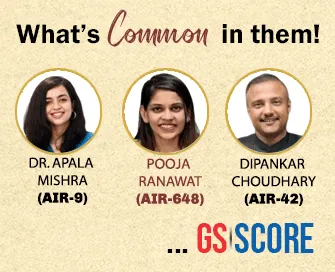

22nd February 2025 (11 Topics)
Context
Governments don’t have their own money; it’s the taxpayers’ money. Every penny the government spends comes from citizens either through taxes or borrowing. So, it’s important to know how the government is using that money.
What the RBI Study Shows?
- The Reserve Bank of India (RBI) has a new study that looks at how well the Indian government, both at the Centre and state levels, spends its money.
- The study introduces a Quality of Public Expenditure (QPE) index to measure this.
- Why Focus on Spending? There are two key goals in India’s public spending:
- Fiscal Discipline – The government should avoid overspending and borrowing too much.
- Boosting Capital Expenditure – More money should go into things that help the economy grow, like building infrastructure, rather than just paying salaries and other regular costs.
- Over time, India has focused on controlling its borrowing (via laws like the Fiscal Responsibility and Budget Management (FRBM) Act) and increasing investment in infrastructure to help economic growth.
- However, challenges like financial crises, political pressures, and increased government spending have sometimes hurt the quality of public expenditure.
Key Measures of Public Spending Quality
To assess how well the government spends, the RBI looks at five important factors:
- Capital Outlay to GDP Ratio: How much money is spent on building infrastructure like roads, schools, etc.
- Revenue Expenditure to Capital Outlay Ratio: The balance between regular spending (like salaries) and investment in infrastructure.
- Development Expenditure to GDP Ratio: Spending aimed at long-term growth, like education, healthcare, and research.
- Development Expenditure as a % of Total Expenditure: More focus on development is a sign of better quality spending.
- Interest Payments to Total Expenditure Ratio: Less money spent on paying interest means more money is available for productive uses.
India’s Spending Record
The RBI's study tracks public expenditure quality from 1991 to now. The study is divided into six phases, based on major events that shaped public spending.
- Phase 1 (1991-2003): Quality improved slightly at the Centre but worsened at the state level due to fiscal pressures.
- Phase 2 (2003-2008): Both the Centre and states faced a drop in quality due to high spending and rising interest payments.
- Phase 3 (2008-2012): Quality improved with fiscal discipline and better economic growth, helping both the Centre and states.
- Phase 4 (2012-2016): The Global Financial Crisis (GFC) led to increased spending (stimulus packages), which temporarily boosted quality but later hurt it.
- Phase 5 (2016-2020): States saw improvements due to higher funds from the 14th Finance Commission, but the Centre faced challenges with new tax-sharing rules.
- Phase 6 (2020-Present): The Covid-19 pandemic led to more spending, but a focus on capital expenditure helped improve the quality of public spending.
Current Status
Right now, the quality of public expenditure in India is the best it has ever been since the start of economic reforms in 1991, according to the RBI’s index. This improvement is mainly driven by a focus on infrastructure and growth-oriented investments.

